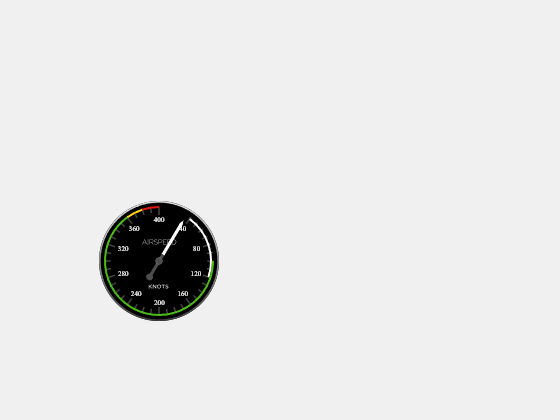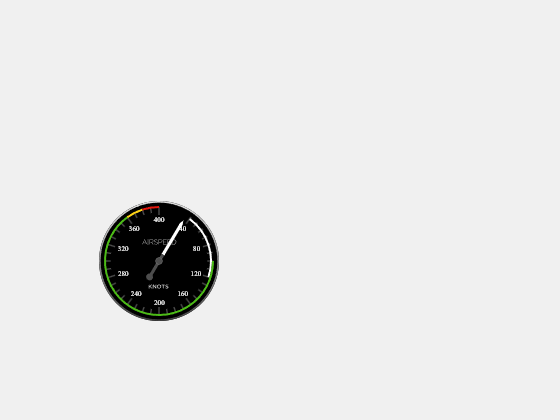uiaeroairspeed
Create airspeed indicator component
Syntax
Description
airspeed = uiaeroairspeeduifigure function to create the
figure.
The airspeed indicator displays measurements for aircraft airspeed in knots.
By default, minor ticks represent 10-knot increments and major ticks represent 40-knot increments. The parameters Minimum and Maximum determine the minimum and maximum values on the gauge. The number and distribution of ticks is fixed, which means that the first and last tick display the minimum and maximum values. The ticks in between distribute evenly between the minimum and maximum values. For major ticks, the distribution of ticks is (Maximum-Minimum)/9. For minor ticks, the distribution of ticks is (Maximum-Minimum)/36.
The airspeed indicator has scale color bars that allow for overlapping for the first bar, displayed at a different radius. This different radius lets the gauge represent VFE (maximum speed with flap extended) and VSO (stall speed with flap extended) accurately for aircraft airspeed and stall speed.
If the value of the input is under Minimum, the needle displays 5 degrees under the Minimum value. If the value exceeds the Maximum value, the needle displays 5 degrees over the maximum tick.
Note
Use this function only with figures created using the
uifigure function. Apps created using GUIDE or the
figure function do not support flight instrument
components.
airspeed = uiaeroairspeed( ___ ,Name,Value)Name,Value
pair arguments. Use this option with any of the input argument combinations in the
previous syntaxes.
Examples
Input Arguments
Name-Value Arguments
Output Arguments
Version History
Introduced in R2018b

